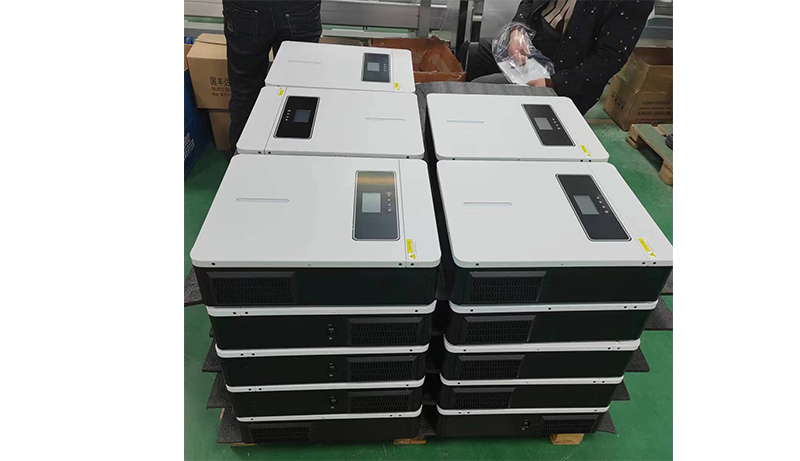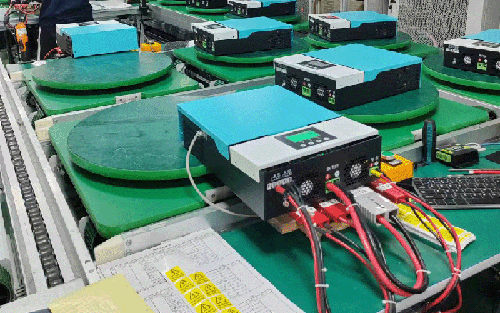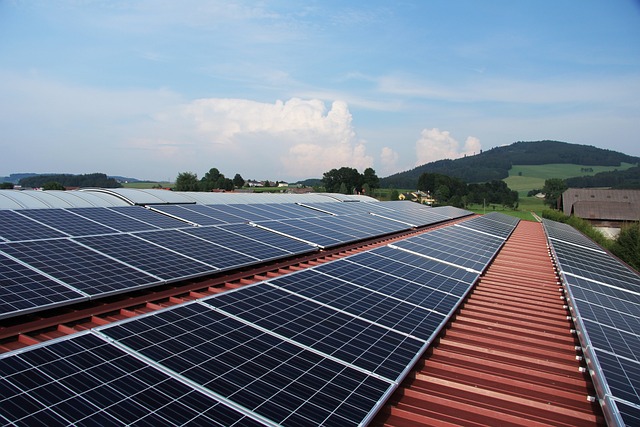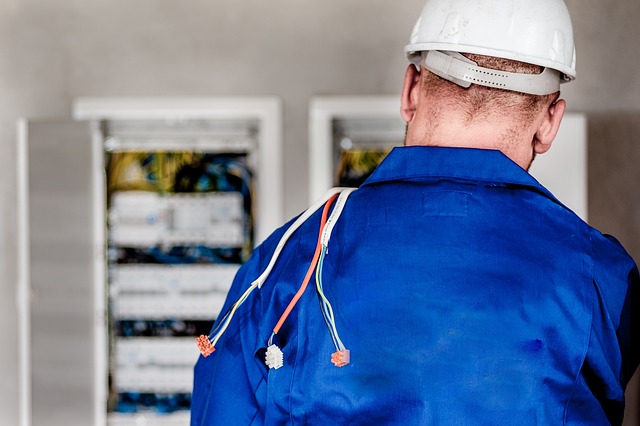What is the difference between a single-phase inverter and a three-phase inverter?
busbyr 2024-03-21 763Inverters are crucial components in many electrical systems, transforming DC power into AC power for a myriad of applications. Among these, single-phase and three-phase inverters are commonly utilized...
Continue readingThe effects of shading on solar panels
busbyr 2023-11-07 160Shading is a crucial factor to consider when harnessing solar energy.By understanding the causes of shading and implementing effective solutions, you can ensure that your solar panels operate at their full potential....
Continue readingHow to choose a good inverter?
busbyr 2023-06-30 141In terms of the output AC power, inverters can be divided into single-phase inverters and three-phase inverters. The single-phase inverter generates single-phase alternating current after inversion, while the three-phase inverter outputs three-phase alter...
Continue readingBenefits of choosing an off grid inverter
busbyr 2023-06-13 128The off grid inverter is the perfect solution for those who want to live off the grid and generate their own electricity. This inverter converts the DC power generated by your solar panels into AC power that can be used to power your home appliances. It i...
Continue readingHybrid Inverter VS String Inverter
busbyr 2023-04-19 178Hybrid Inverter VS String InverterPhotovoltaic systems convert solar energy into electrical energy through the photovoltaic effect of photovoltaic modules to generate electricity. Daily residential, i...
Continue readingHow to choose a high-quality solar inverter for residential photovoltaics?
busbyr 2023-04-11 120The capacity of solar inverter for residential photovoltaics is generally around 5-10KW, and it is necessary to choose an inverter with high conversion efficiency and good quality components. The inverter converts DC power (battery, storage battery) in...
Continue readingHow to select a smart pv inverters for a pv system?
busbyr 2023-04-06 91Single-phase smart pv inverters are dedicated to photovoltaic systems. It is responsible for converting direct current into alternating current, so the energy stored in the photovoltaic cells can be used in the building to operate the devices running in i...
Continue readingHow is the Solar String Inverter working?
busbyr 2023-04-03 124String inverters are divided into off-grid series inverters and hybrid series inverters. The most identifiable criterion for choosing a solar inverter is the type of photovoltaic installation....
Continue readingWhat is the difference between on-grid inverters, off-grid inverters and hybrid inverters?
admin 2023-03-28 170Photovoltaic panels collect solar energy and convert it into direct current (DC). However, most homes and businesses use alternating current (AC)....
Continue readingWhy can the off-grid inverter be overloaded several times?
admin 2023-03-28 164In a photovoltaic grid-connected system, components, inverters, and grids constitute an electrical system....
Continue readingA few cold knowledge of photovoltaic off-grid system battery
admin 2023-03-28 85Photovoltaic off-grid power generation system consists of photovoltaic array, solar controller, inverter, battery pack, load and so on. The photovoltaic array converts solar energy into electrical energy, charges the battery pack through the controller, a...
Continue readingWhy household photovoltaics lead the world?
admin 2023-03-28 64With the development of science and technology and the concept of low-carbon environmental protection is deeply rooted in the hearts of the people, photovoltaic transformation in the home is also an increasingly mature technology....
Continue readingWhat is a string inverter?
admin 2023-03-28 126The string inverter is based on the concept of modularization. Each photovoltaic string passes through an inverter, which has maximum power peak tracking at the DC end and is connected in parallel to the grid at the AC end...
Continue readingWhy is the inverter the core of the photovoltaic power generation system?
admin 2023-03-28 77A photovoltaic inverter (PV inverter or solar inverter) is an inverter that converts variable DC voltage generated by photovoltaic (PV) solar panels into mains frequency alternating current (AC) that can be fed back into commercial power transmission sys...
Continue readingWhat is the development trend of different types of inverter market?
admin 2023-03-28 95In the composition of the inverter market, centralized inverters originally accounted for the highest proportion....
Continue readingHow to choose a high-performance solar inverter?
admin 2023-03-28 102The inverter is the heart of the photovoltaic system. All the electricity generated by the solar panel must be processed by the inverter before it can be output to the outside....
Continue readingHow to correctly use and maintain photovoltaic independent inverter?
admin 2023-03-28 105Connect and install the equipment in strict accordance with the requirements of the inverter maintenance manual....
Continue readingHow to get more energy from PV modules?
admin 2023-03-28 108The impact of light intensity changes on battery output power is greater than the impact of temperature changes....
Continue readingWhat are the precautions for photovoltaic inverters?
admin 2023-03-28 80There are many parameters and technical conditions to describe the performance of photovoltaic inverters. Here we will only briefly explain the technical parameters commonly used when evaluating inverters....
Continue readingHow to tell which type of solar inverter you are buying?
admin 2023-03-28 94There are various classifications of solar inverters, here we will focus on other classification methods....
Continue readingWhat are the two types of solar inverters according to different output waveforms?
admin 2023-03-28 91Solar inverters can be divided into square wave inverters, ladder wave inverters and sine wave inverters according to different output waveforms....
Continue readingWhat are the four major types of photovoltaic inverters according to their application fields?
admin 2023-03-28 65Photovoltaic inverters can be divided into ordinary inverters, inverter/charging integrated machines, special inverters for post and telecommunications, and special inverters for aviation and military according to their application fields....
Continue readingWhat factors affect the efficiency of solar energy inverter?
admin 2023-03-10 100Factors that affect the efficiency of solar energy inverters are mainly improved in two aspects: First, when converting DC current into AC sine waves, it is necessary to use a circuit using power semiconductors to switch the DC current....
Continue readingWhat are the classifications of solar inverters?
admin 2023-03-10 79Solar inverters are generally divided into centralized inverters, string inverters, multi-string inverters, and component inverters. The principles and differences of each inverter are briefly described below....
Continue readingWhat is the conversion efficiency of photovoltaic inverter?
admin 2023-03-10 74The conversion rate of a photovoltaic inverter refers to the efficiency with which the inverter converts the electricity generated by the solar panel into electricity....
Continue readingWhat are the two important functions of photovoltaic inverters?
admin 2023-03-10 88The inverter not only has the function of DC-AC conversion, but also has the function of maximizing the performance of solar cells and the function of system fault protection....
Continue readingWhat is the working principle of photovoltaic inverter?
admin 2023-03-10 87Photovoltaic inverter is a power adjustment device composed of semiconductor devices, which is mainly used to convert DC power into AC power. It is generally composed of a boost circuit and an inverter bridge circuit....
Continue readingWhat is a solar inverter?
admin 2023-03-10 92In the process of building and operating photovoltaic power plants, solar inverters in electrical equipment play a very important role. Like photovoltaic power generation system technology, they continuously improve operating efficiency and conversion pow...
Continue reading

































